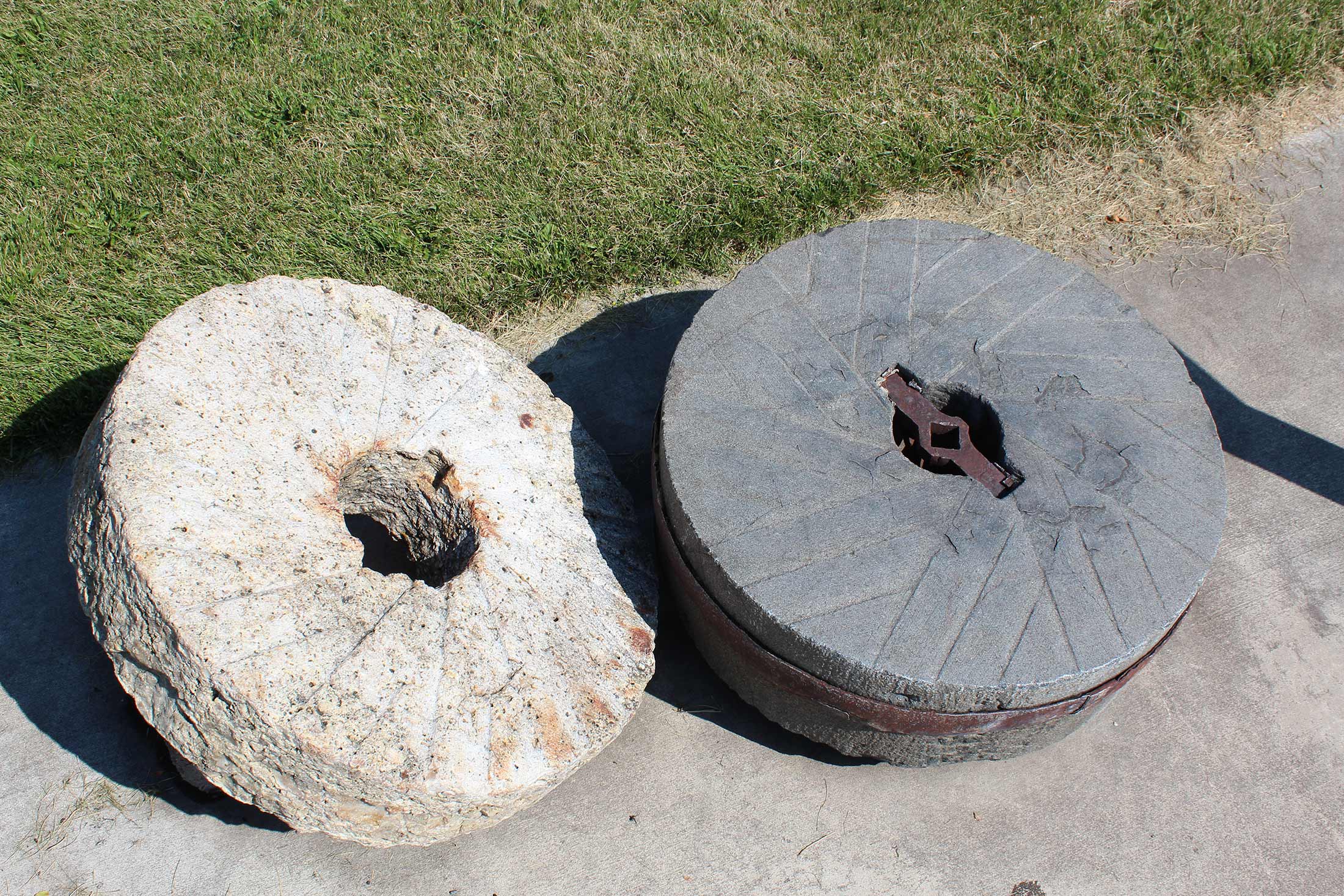

These millstones were used at the Frenchtown Flouring Mill located on Mill Creek in the 1860s to grind wheat that was brought to Missoula to be sold to local businesses. Art Donlan donated the stones to the museum in 1975.
Can you spot...
These millstones were used at the Frenchtown Flouring Mill and were used to grind local wheat into flour. In 1862, Baptiste Ducharme, Louis Brown and Moses Reeves built the flourmill two miles north of Frenchtown near the present-day cemetery. Dan Calking, a millwright, did the actual construction of the mill, while Pat Owens was responsible for cutting the millstones from two granite boulders. They cost Ducharme, Brown and Reeves $100. Over the years the mill was sold and purchased many times. Eventually it was referred to as the “Old Mill” in the 1880s, but it is not known how long the mill operated. Art Donlan donated the stones to the Historical Museum at Fort Missoula in 1975.
Millstones like these operated in pairs. The bottom stone, called a bed stone, was stationary, while the top stone, called the runner, was turned in a circular motion either by hand or by machines to create the grinding action. The grain was poured through a hole in the top runner stone and fed into the space between the two stones. The lower bed stone could be raised or lowered depending on the texture of meal.
The surface is grooved, or “furrowed”, in a pattern that causes the direction of the meal to flow away from the centers of the stones to their outer edges. Often these patterns dictate if the stones will revolve either clockwise or counterclockwise.

